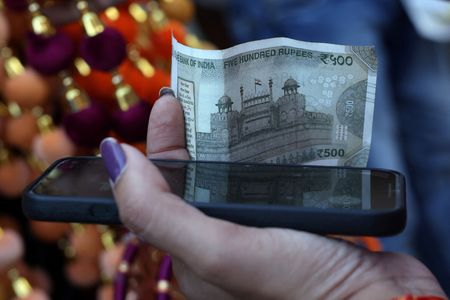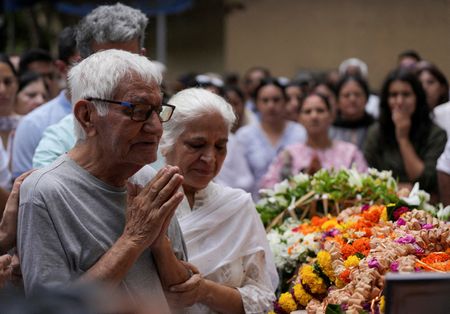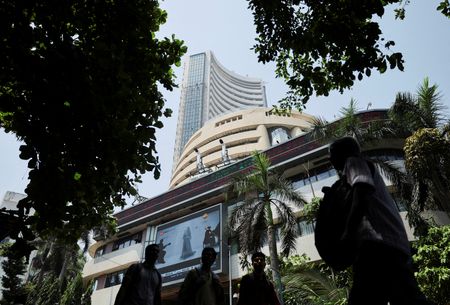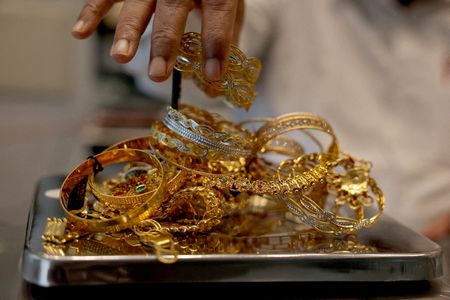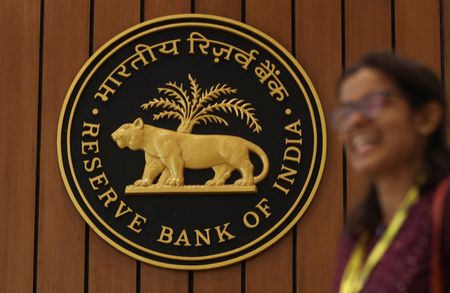By Jaspreet Kalra
MUMBAI (Reuters) – The Indian rupee traded in a narrow range on Thursday and closed nearly flat, with likely central bank intervention staving off the pressure from weak equities and foreign outflows.
The rupee closed at 88.6650 against the U.S. dollar, nearly unchanged from its previous close at 88.69.
The RBI most probably intervened through state-run banks to support the rupee, traders said, adding that the move helped the currency withstand pressure due to dollar demand from foreign banks and local importers.
India’s benchmark equity indexes, BSE Sensex and Nifty 50 declined for the fifth straight session to end lower by about 0.7% each while IT stocks, in focus after the change in U.S. visa policies, dropped by over 1%.
Nomura analysts said in a note that changes to the H-1B visa policy could add to risks of equity outflows, hurt the rupee, curb growth of remittances to India and slightly reduce corporate income repatriation from the U.S.
They recommend betting on a weaker rupee against the euro, which hit a peak of 104.87 earlier this week when the local unit slumped to a record low of 88.7975 per dollar.
Foreign investors have already sold $1.3 billion of Indian stocks so far in September.
The rupee’s muted price action on Thursday also echoed similar moves in broader currency markets with the dollar hovering little changed at 97.8 against a basket of peers.
Investors are awaiting comments from U.S. Federal Reserve policymakers later on Thursday ahead of Friday’s personal consumption expenditure (PCE) data for clues on the rate outlook.
At home, the RBI is expected to leave policy rates unchanged next week, though some economists see a possible 25-basis-points cut to shield economic growth from slipping.
(Reporting by Jaspreet Kalra; Editing by Nivedita Bhattacharjee)

